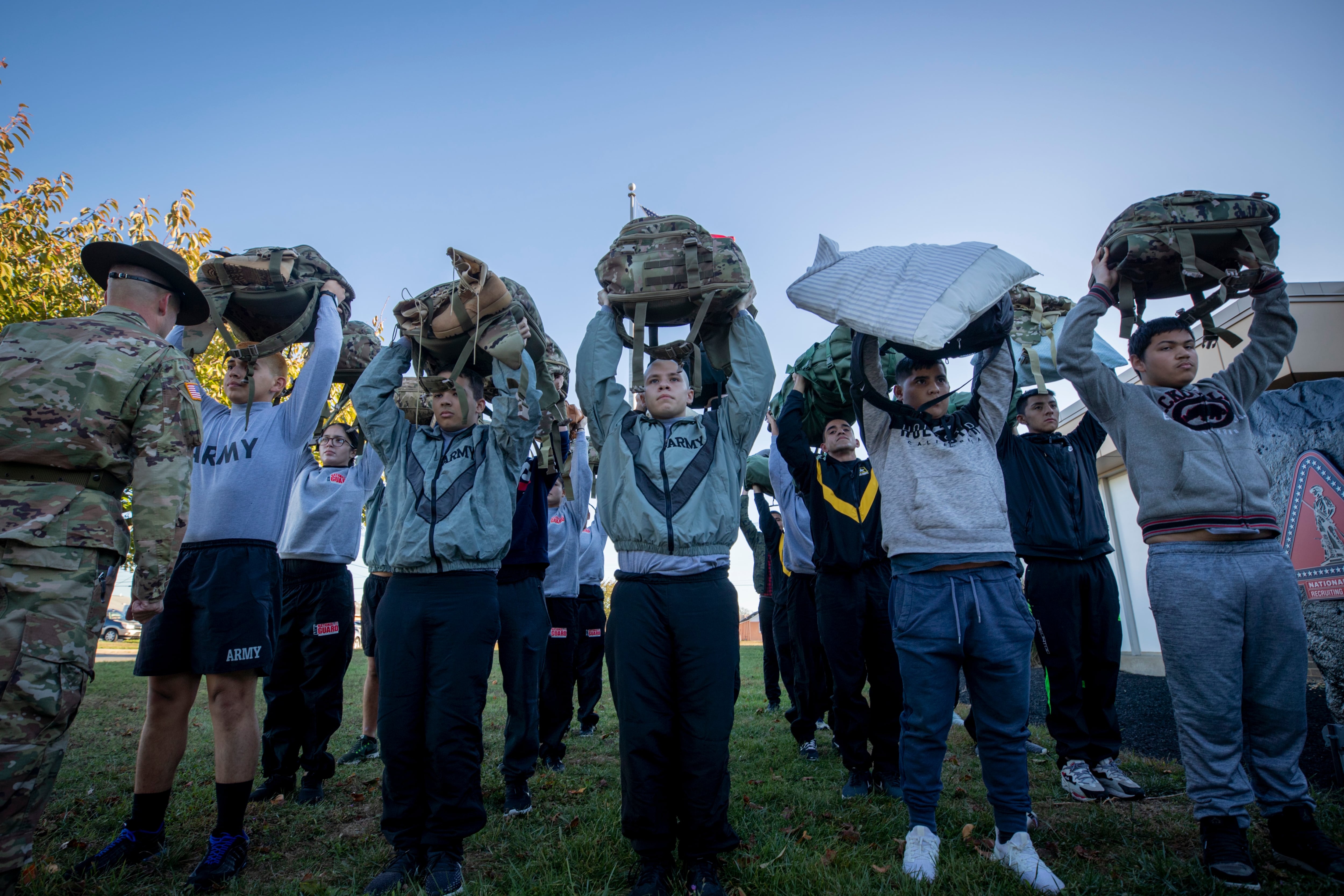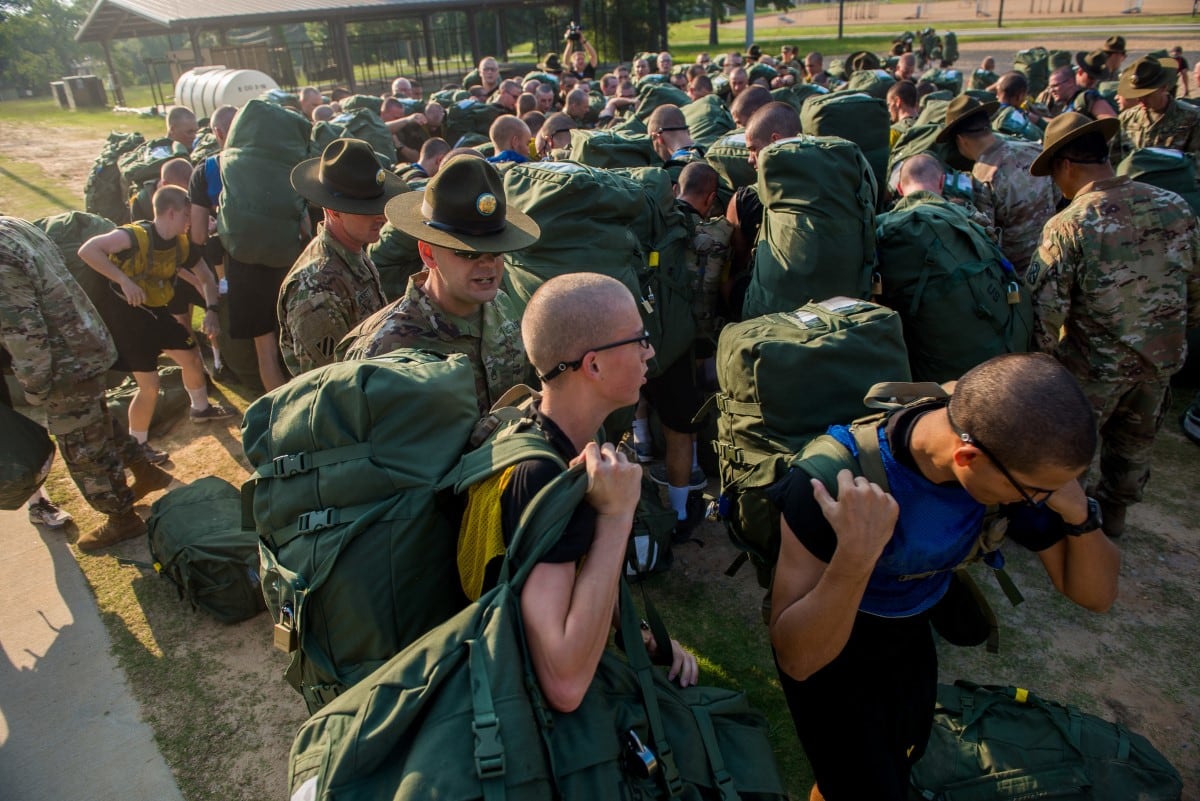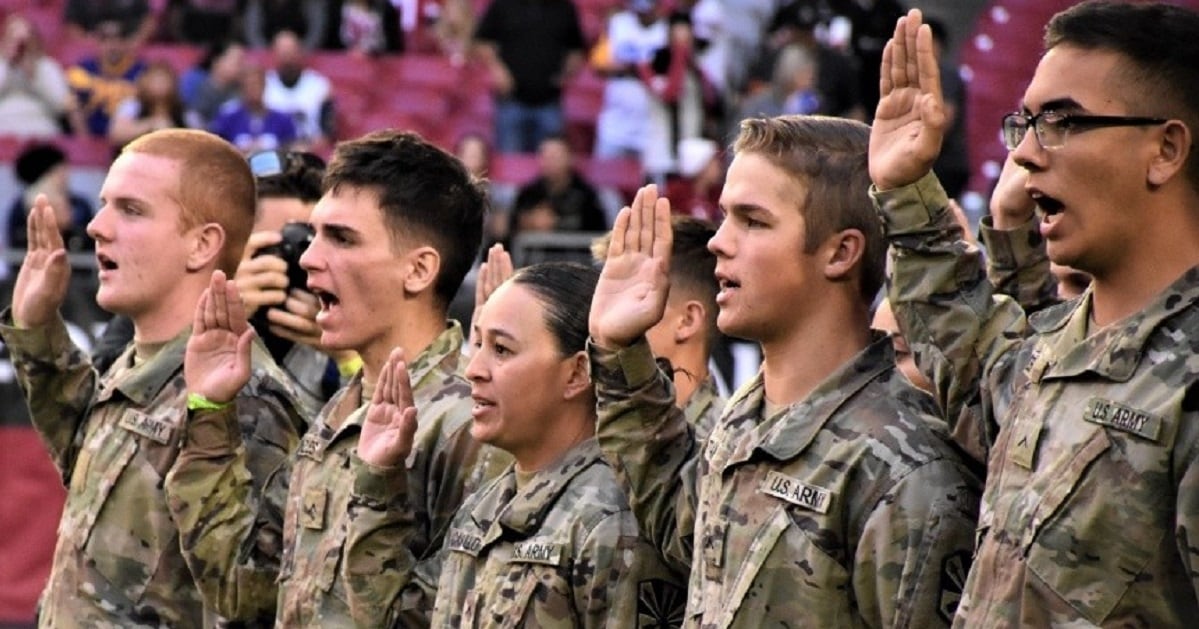U.S. Army Recruiting Command has faced its fair share of challenges in getting prospective soldiers “into boots” over the past few years, including the constraints of the COVID-19 pandemic, a shrinking pool of physically and medically qualified Americans and slipping trust in the military among the public.
Despite those factors, the command just barely missed its accessions goals in fiscal 2021, according to data requested by Army Times.
USAREC secured 57,606 active-duty accessions against a goal of 57,500 this past fiscal year, the command said. The shortfall came on the Army Reserve side, with only 11,690 applicants shipping to training despite a target of 15,875.
Although the Army is asking USAREC to do better in fiscal 2022, the command will have fewer recruiters.
But USAREC still thinks it can hit its goal by giving each recruiter their own quota and designated territory to build stronger community connections.
“We are reducing our recruiting force size again,” confirmed Maj. Gen. Kevin Vereen, USAREC’s commanding general, during a media roundtable last month. “So with that, we have to be...more streamlined and more efficient in how we recruit.”
Why are there fewer recruiters?
Traditionally, the Army has filled the recruiting ranks by soliciting volunteers and involuntarily selecting thousands of NCOs for three-year tours with USAREC. Relatively few recruiters remain with the command long-term.
But this year, the command has 1,000 fewer Army-selected recruiters, explained Sergeant Major of the Army Michael Grinston in interviews last month. Previously, USAREC had 10,000 temporary recruiters, but that number has decreased to 9,000.
The drop was caused by Grinston’s “This is My Squad” initiative. Most recruiters are pulled from the staff sergeant ranks, but the Army is trying to keep more of those soldiers in the operational force.

The Army’s top NCO has been looking for ways to increase the amount of time that staff sergeants spend as squad leaders in line units. The effort includes implementing a two-year minimum “time-in-job” requirement before a staff sergeant can pursue a broadening assignment, like recruiting, in addition to increasing the minimum time-in-grade for promotion to sergeant first class.
Reducing the number of Army-selected recruiters is just another part of that equation, Grinston argues, saying that USAREC had over hired.
“In order to have a really good squad, you probably need a squad leader,” Grinston told Army Times in an interview before last month’s annual Association of the U.S. Army conference.
SMA clarified that USAREC isn’t getting a corresponding increase in permanent recruiters, either. That would require reducing strength in another career field to balance the move.
“We’re just being more efficient with what we have, and trying to get some new techniques” focused on leveraging marketing resources and the digital environment, Grinston said. “We [can] get a very good product...[and] don’t have to do what we’ve done in the past, like the door-to-door salesman.”
‘Mission modernization’
USAREC leaders think they’re taking the right steps to increase production through some recent adjustments to how they recruit that will take effect in January, according to Walt Quinn, a USAREC spokesperson.
They call it “mission modernization” at the Fort Knox, Kentucky-based command.
Now, individual recruiters will be formally responsible for a personal quota of recruits. And “each NCO will have an assigned recruiting zone, so we don’t have multiple people trying to reach the same market,” beginning in April 2022, Quinn said.
Vereen, the USAREC commander, said the move will ensure all recruiters “assume ownership” and are pulling their weight. Previously, quotas were formally distributed at the recruiting station level, meaning that high performers could buoy their struggling counterparts.

Some critics of the change are concerned about the potential impact the move could have on recruiters’ mental well-being.
The Army used to have formal individual missions for recruiters, but the practice ended sometime between 2002 and 2003, according to an Army investigation from 2008 that evaluated USAREC’s procedures after a cluster of suicides at the Houston Recruiting Battalion. Subsequent pushes for individual production have been set by subordinate commanders, which is what the investigation said occurred in Houston, rather than USAREC itself.
“We are now trying to change the mindset of the folks who have been in recruiting for a while,” said Vereen. “It’s mission command — we’re allowing our NCOs to assume responsibility, to have and own a mission, and to deliver on their mission.”
The aim of assigning geographic territory to individual recruiters, Quinn explained, is to “[establish] better community relations and [create] stability in markets so they become known as the primary Army representative” in their area.
Quinn said the command is also working to get better digital tools into the hands of recruiters and make them “more autonomous” as part of the effort.
“We are currently training the entire force on a new tool that will help us better evaluate the local market,” said Quinn, who noted that the tool will help shape the individual “recruiting zones.”
Recruiters may also soon see “soft phones” that they can use to make and take phone calls from their computers, Quinn added.
Vereen emphasized, though, that the tools and other virtual recruiting initiatives are “an additional capability.”
Individual performance will be key given the reduction in Army-selected recruiters.
“With all the tools that we’re given, I think we’ll be very successful,” Vereen said. “But we can not continue to go down the road with a reduced [recruiting force] — where I have not all of my NCOs [contributing] to the mission.”
Davis Winkie covers the Army for Military Times. He studied history at Vanderbilt and UNC-Chapel Hill, and served five years in the Army Guard. His investigations earned the Society of Professional Journalists' 2023 Sunshine Award and consecutive Military Reporters and Editors honors, among others. Davis was also a 2022 Livingston Awards finalist.




